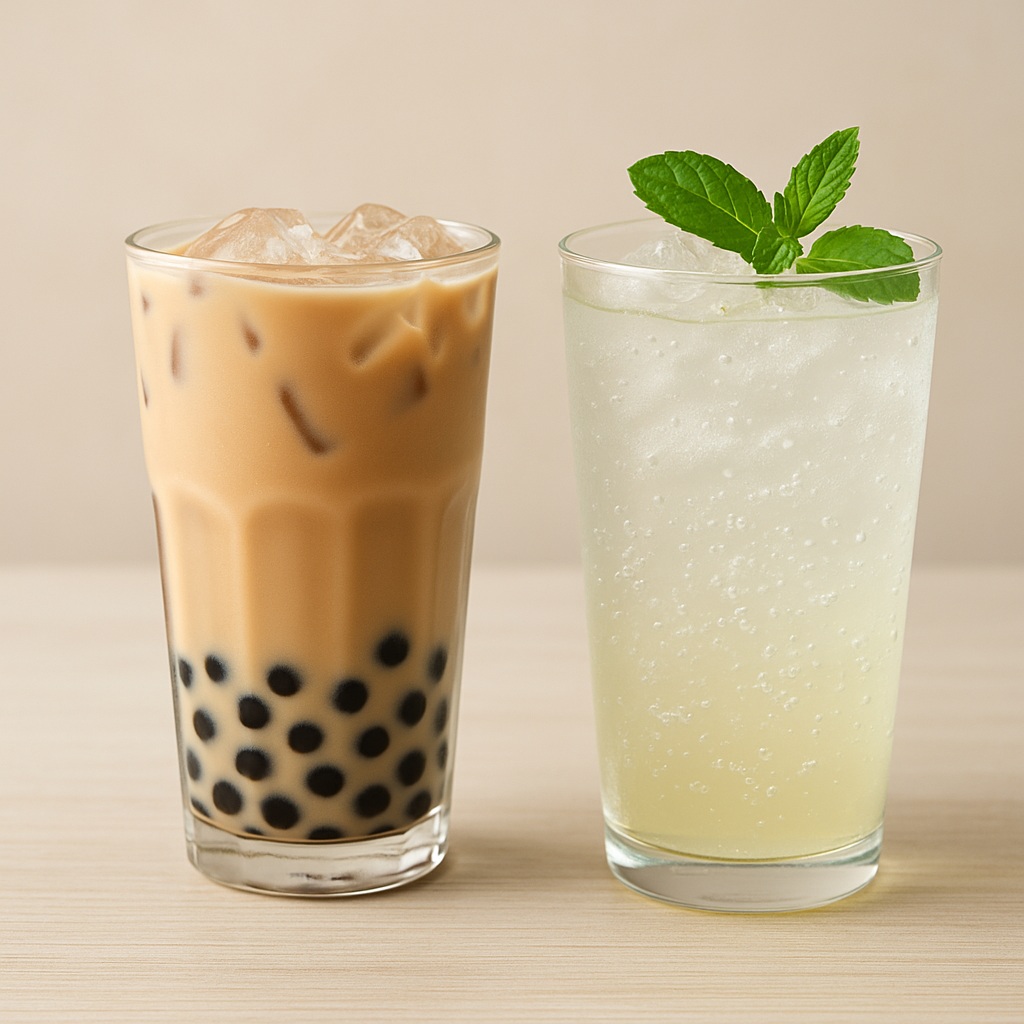The Rise of Zero-Cal Drinks: How the Trend Is Transforming the Bubble Tea Industry

Over the past decade, bubble tea has grown from a regional Taiwanese beverage to a global phenomenon. Yet in 2025, the industry is facing a new shift—one driven not by toppings or tea bases, but by consumer lifestyles. As health-conscious behavior accelerates worldwide, zero-calorie and low-calorie drinks are becoming one of the fastest-growing segments in the beverage market. This shift is reshaping how bubble tea shops design menus, how suppliers develop ingredients, and how brands position themselves in an increasingly competitive landscape.
1. Changing Consumer Behavior: From Indulgence to Balance
Bubble tea has long been associated with indulgence—creamy textures, chewy tapioca pearls, and sweet flavor profiles. However, global consumer preferences are evolving:
-
57% of Gen Z consumers report reducing sugar intake in their daily diets.
-
Low-cal and zero-sugar beverage searches have grown significantly across North America, Europe, and Southeast Asia.
-
Functional beverages—such as vitamin-packed, probiotic, or herbal-based drinks—are rising alongside traditional tea-based drinks.
This does not mean consumers are turning away from bubble tea; instead, they are seeking balance: a way to enjoy beloved flavors while exploring lighter alternatives. This shift creates opportunities for new menu categories that appeal to modern lifestyle preferences.
2. Zero-Cal Drinks as a Global Trend
The surge in zero-cal beverages is not exclusive to any one region. Across major markets, the trend is becoming mainstream:
North America
Low-sugar and zero-cal beverages are increasingly positioned as everyday choices rather than diet products. Younger consumers expect transparency and “cleaner” ingredient lists.
Europe
The adoption of sugar taxes in the UK, Germany, and parts of Scandinavia accelerates interest in low-calorie alternatives. Beverage brands are pressured to reduce caloric density while maintaining flavor.
Asia-Pacific
In regions where bubble tea originally thrived, consumers now actively seek “light tea,” fruit-based sparkling drinks, konjac jelly alternatives, and zero-sugar toppings.
Together, these factors contribute to a global environment where zero-cal innovations support rather than threaten traditional bubble tea offerings.
3. Innovation in Ingredients and Formulation
To fit consumer demand, product development has shifted in three key areas:
(1) Zero-Cal Sweeteners
Modern sweeteners such as erythritol, monk fruit extract, and high-purity stevia offer cleaner taste profiles compared to earlier generations. More shops are integrating hybrid sweetening systems to maintain flavor complexity while cutting calories.
(2) Functional Ingredients
The rise of “wellness-driven drinks” introduces elements like:
-
probiotics
-
collagen
-
botanical extracts
-
vitamin blends
-
low-GI fruit concentrates
These additions enable shops to differentiate beyond standard milk tea.
(3) Low-Cal or Zero-Cal Toppings
Consumers increasingly consider topping calories when choosing drinks. As a result, konjac pearls, aloe vera cubes, and fruit-based jellies are climbing in popularity. These toppings provide texture with fewer calories compared to traditional tapioca pearls.
4. Menu Strategy: How Bubble Tea Brands Are Responding
Forward-thinking bubble tea chains and independent shops have begun restructuring menus:
-
Separate light-drink categories (Zero-Cal Series, Light Fruit Tea Series, Low-Sugar Sparkling Series)
-
Clear sugar-level labeling to boost transparency
-
Seasonal zero-cal beverages to experiment with flavors
-
Replacing part of the dairy with plant-based alternatives to reduce calories and widen audience reach
Rather than replacing classic drinks, zero-cal options act as complementary offerings—broadening the shop’s appeal and helping capture health-oriented consumers who might otherwise avoid bubble tea entirely.
5. What This Means for the Future of the Bubble Tea Industry
The rise of zero-cal drinks is more than a passing trend. It represents a structural evolution shaped by global health awareness. In the coming years, the bubble tea industry is expected to move in three main directions:
-
Hybrid Menus
Shops will balance indulgent classics with lightweight functional beverages. -
Ingredient Transparency
Clear nutritional information will become a competitive advantage, especially in Western markets. -
Greater Innovation in “Healthy Indulgence”
Brands will search for ingredients that allow consumers to enjoy the full sensory experience of bubble tea without the guilt.
Bubble tea’s global expansion will depend not only on flavor innovation, but also on how well it adapts to health-forward consumer demands.
Conclusion
Zero-cal drinks are no longer niche—they are becoming a defining force across the beverage industry. For bubble tea businesses, embracing this trend means unlocking new customer segments, improving menu diversity, and staying relevant in an increasingly health-conscious market.
If you would like support in exploring new ingredients or menu development ideas, feel free to contact us anytime.

